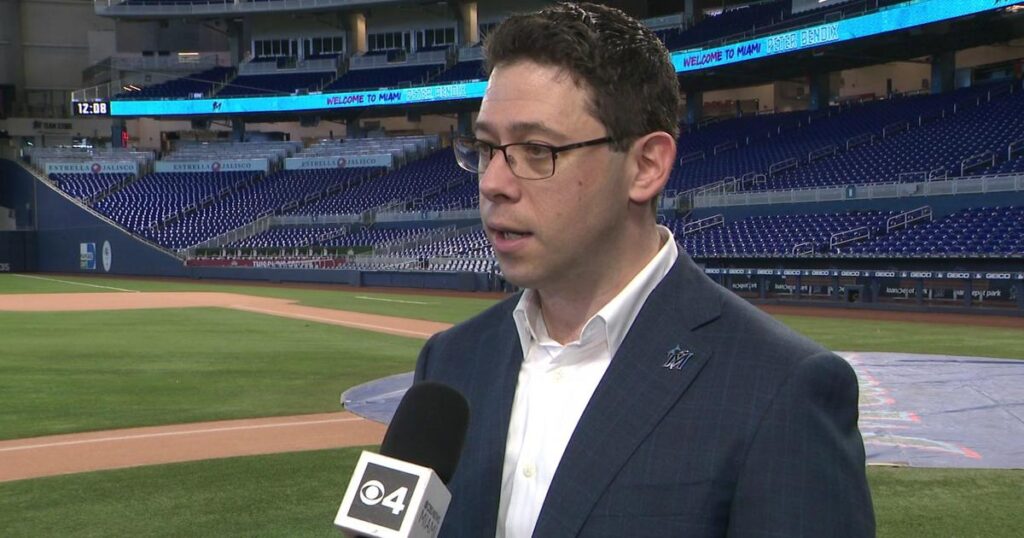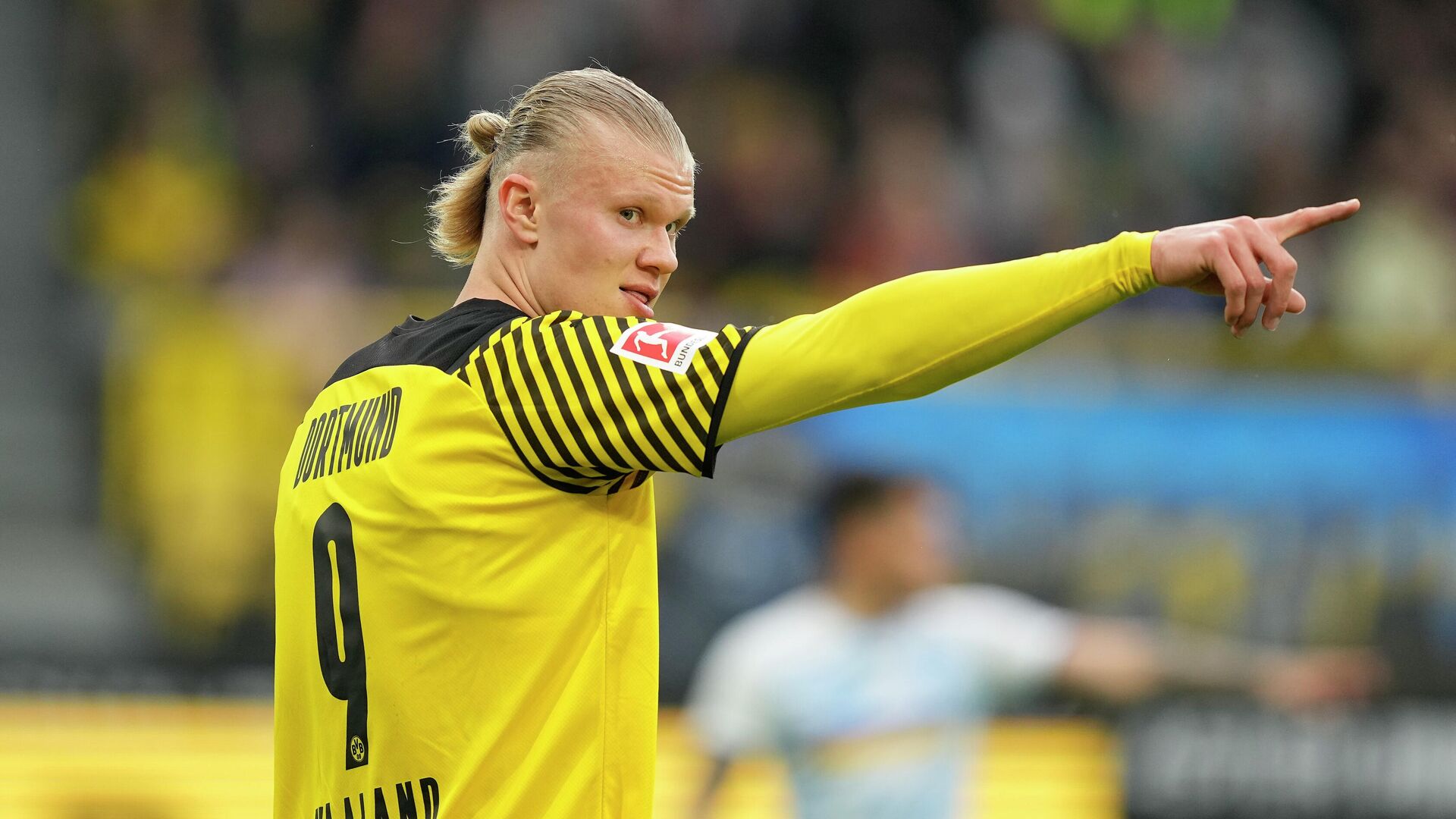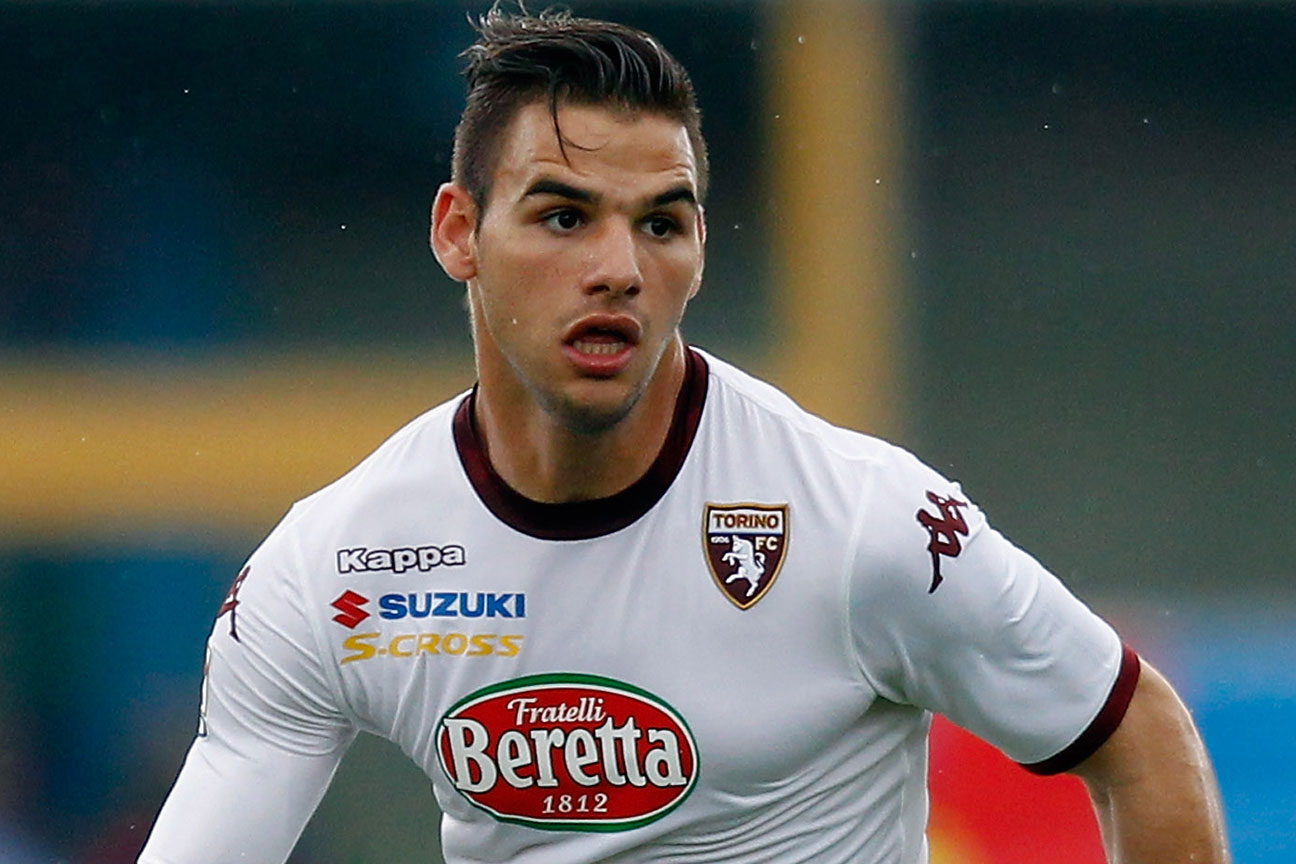
Peter Bendix has devised a strategy for the Miami Marlins.
The Miami Marlins’ opening game in Oakland last Friday coincided with the finalization of their trade involving Luis Arráez, creating an awkward scenario. Arráez, dressed in full uniform, found himself amidst current teammates who were soon to become former ones, unsure of what to do next.
This unusual trade, occurring barely five weeks into the Major League Baseball season, was particularly surprising given that it involved the reigning National League batting champion. Arráez’s sudden departure on live television hinted at a potential start of another rebuilding phase for the Marlins.
Peter Bendix, the Marlins’ president of baseball operations for the past six months, had previously maintained a relatively quiet offseason, only to witness the team struggle, losing 24 of their first 33 games. The trade of their star player to the San Diego Padres for a package of prospects further fueled frustration among fans, who have grown weary of the team’s perpetual rebuilding efforts over the past three decades.
Bendix, however, remains steadfast in his goal of establishing a consistently winning team, albeit acknowledging that it may require significant time. He recognizes the impatience of the fan base but emphasizes the importance of building a sustainable winning culture.
When pressed to elaborate on his strategy, Bendix emphasized the need for disciplined decision-making and the importance of having a strong organizational structure, including top-tier coaches, development staff, and scouting personnel.
Despite his clear vision, Bendix is cautious with his words, mindful of the heightened tension between him and Marlins fans. His hiring, following the departure of Kim Ng, came amid mixed reactions, as Ng’s departure was seen by many as a setback after she played a pivotal role in the team’s surprising wild-card berth in 2023.
Rather than building on the success of the playoff-bound team from the previous season, Bendix opted for a cautious approach during the offseason. This strategy involved not re-signing Jorge Soler, making only one significant free-agent signing – veteran shortstop Tim Anderson for $5 million – and further reducing the team’s payroll.
USA Today reported three weeks into the regular season that Skip Schumaker, the reigning NL Manager of the Year, had requested the Marlins to decline the option in his contract for 2025, indicating his reluctance to be part of a rebuilding phase. This was followed by the Arráez trade, which drew criticism, especially after Bendix’s acknowledgment that the Marlins were unlikely to make the playoffs that year, fueling further discontent among fans.
Bendix’s approach has a rationale, even if it doesn’t align with the sentiments of the fan base. Despite making the playoffs in 2023 despite being outscored by 57 runs, there were signs of potential trouble. Instead of committing significant resources to maintain a team that appeared poised for regression, Bendix opted to retain the core group, banking on full seasons from Jake Burger and Josh Bell, both acquired in August, to compensate for any decline in performance and keep the Marlins competitive.
However, Bell, Burger, and Anderson struggled initially, while Eury Perez suffered a torn ulnar collateral ligament, joining Sandy Alcántara in undergoing Tommy John surgery. Additionally, promising young pitchers like Jesús Luzardo, Trevor Rogers, and Edward Cabrera struggled, leading to a downturn in the Marlins’ performance within the NL East. By the beginning of May, their playoff odds, as per FanGraphs, had plummeted to below 1%.
Arráez, who is under team control through 2025, expressed a desire to remain with the Marlins, according to sources familiar with the situation. However, the Marlins appeared hesitant to commit to a player with defensive limitations and average power, despite his exceptional hitting ability and popularity among teammates. Consequently, they traded him sooner than anticipated.
Alcantara, who signed a lucrative five-year, $56 million extension in 2021 and won a Cy Young Award the following year, is still grappling with the recent developments. He reflects, “Everything was going well last year; we made the playoffs and won many games. But I’m unsure about the recent changes, the trades. However, I refrain from commenting too much as the decisions are made by the management, and I’m here to play baseball.”
Alcantara, the longest-serving player for the Marlins, epitomizes a noticeable trend across the roster: even he wasn’t developed within the organization. A mere quarter of the current Marlins were originally drafted or signed by the team, with only one, Nick Fortes, an everyday player.
The Marlins started the season with the second-weakest farm system in the league, as per ESPN’s Kiley McDaniel, a concerning position for a team consistently low in payroll and attendance, leaving them with little margin for error. Their infrastructure required significant reorganization.
Bendix’s primary task upon joining was to address this issue – to implement the draft-and-develop approach that has proven successful for the Rays, despite their limited budget. While this model demands substantial financial investments in analytics and development tools, it relies on synergy and culture-building, processes that take years to establish. Critics of Bendix’s strategy argue that it shouldn’t come at the expense of competing at the major league level.
“I believe it’s possible to balance both,” Bendix asserts when presented with this scenario. “It’s incredibly challenging, but we still have a lot of talent on our major league team.”
The prevailing industry perception is that the Marlins will continue to offload players before the July 30 trade deadline, with Luzardo and Jazz Chisholm Jr. likely candidates to depart. However, Bendix contends that the Arráez trade does not hinder the Marlins’ efforts to compete as early as 2025 when Alcantara and Perez, ideally, return to full health, joining Luzardo, Cabrera, Braxton Garrett, and Trevor Rogers in the rotation.
Yet, it is probable that this will be another protracted process, with at least one of the aforementioned pitchers likely not being part of the team next year. While Bendix hails from an organization that set a blueprint for teams like the Marlins, fans’ skepticism is understandable. In his own way, Bendix empathizes with their sentiments.
Twenty-seven years ago, Bendix, then a fervent 12-year-old fan, witnessed the Cleveland team lose the 1997 World Series to the Marlins on an extra-inning walk-off single in Game 7. The Marlins dismantled their roster shortly thereafter, culminating in a dismal 108-loss season the following year – a memory that Bendix vividly recalls. Subsequent rebuilds followed.
Following their second championship win in 2003, the Marlins again faltered, missing the playoffs for 16 consecutive seasons, in part due to their failure to retain breakout stars from the World Series such as Miguel Cabrera and Josh Beckett. They later acquired high-profile players in Mark Buehrle, Jose Reyes, and Heath Bell to inaugurate a new ballpark in 2012, only to trade them – along with Hanley Ramirez and Josh Johnson – by year’s end. Several years later, they relinquished an exciting young core featuring J.T. Realmuto, Christian Yelich, Giancarlo Stanton, and Marcell Ozuna, initiating the rebuild that led to the current roster – which may soon undergo changes again.
This could mark the fifth rebuild under the fourth owner and sixth general manager in 31 years. Bendix aspires to establish a consistently competitive team in a market that has witnessed promising squads disband repeatedly – a feat none of his predecessors achieved. He refrains from setting a timeline for when the Marlins might contend again.
His message to fans exhausted by the ongoing process?
“That we’re diligently working every single day to expedite that process as much as possible.”
)




